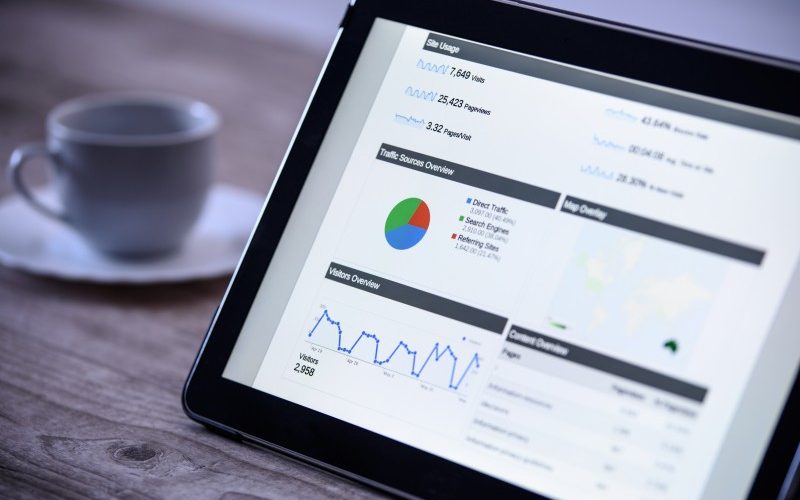Some common questions among small to medium size businesses today are:
1. How do I improve my website performance?
2. How do I setup goals in Google Analytics?
3. Should I be using Social Media?
4. How do I know if the events I attend result in sales on my website?
There’s no doubt that navigating todays business landscape requires that a large part of your marketing efforts be digital. Customers and businesses are online all day and you want to be able to meet them there. Identifying your audience and learning how they interact is invaluable information that can drive your digital marketing strategy for the future.
You’re already trying to run your business and grow sales, so how then are you supposed to create a digital marketing strategy that can grow with your business?
Why do I need a Digital Marketing Strategy
The landscape has changed and continues to change at an ever-increasing rate. It is important to be able to evaluate your efforts and make decisions based on data and results. Without a digital marketing strategy, it becomes very difficult to analyze your marketing efforts. Your digital marketing strategy does not need to be complicated. It can really be an outline of your goals. Your goals could be as simple as generating 20% more sales on your website than the previous year. Or maybe you’re more concerned with subscribers to your newsletter. Regardless, putting your goals into a strategy is the first step. Once you’ve identified the goals of your digital marketing strategy, you can start to build a plan around achieving those goals.
Having more than one goal is quite common. Determining what type of resources you have to execute on your digital marketing strategy will help to identify how many goals you should include.
What is the difference between a digital marketing strategy and a digital marketing campaign?
Let’s be clear; your digital marketing strategy is your overall plan. Your digital marketing campaigns makeup the individual actions you will take to support your strategy.
You may determine that creating a premium piece of content, gating it and sharing it on social media is a great way to create new leads. This action is a campaign which is part of your digital marketing strategy.
Ok, so let’s dive in and have a look at some of the building blocks of an online marketing strategy.
Building blocks of a Digital Marketing Strategy
1. Knowing your customers
Probably the most important piece of your strategy (and often overlooked) is knowing your buyers persona. Buyer personas represent your target customer and once identified allow you to refine your marketing efforts to a specific persona that is most likely to buy from you. You may think you know your buyer persona but this information should be created through data and research.
The information you want to glean from your buyer personas to help inform your digital marketing strategy depends on what you sell and who you are selling to. Do you have a high cost product or a low cost product? Do you sell directly to your customers or are you selling to businesses. Do you sell to both?
Some key points that you will want to identify about your buyer personas:
- Challenges; what challenges does your buyer persona need solved? How is your product/service solving that challenge?
- Outcomes; what outcome is your buyer persona hoping for when shopping for products like yours? It’s a good idea to speak to your current customers to find out what their goals are in regards to your products/services.
- Loyalty; it’s important to understand what drives your continuing relationship with your customers. Is it price? Is it customer service? Is it your ability to create custom solutions for them? Speak to your customers and find out. This can inform your strategy as to what your messaging is based upon. If the information you gather points to your customers valuing customer service above price, you want to make sure your marketing messaging aligns with that.
2. Aligning your goals with your tools
Identifying your goals is key to creating your online strategy. Think of your business goals first. Is the goal to increase revenue? If your goal is to increase revenue then you’ll need to develop campaign goals to support that goal such as drive more leads. Whatever the goal may be, the most important thing is to be able to measure your progress towards achieving that goal. You’ll need to implement some tools to measure your campaigns and evaluate success. Without these tools, it becomes very difficult to measure the effectiveness of any campaign.
3. What have you been doing to market up to this point?
Create a list of the current marketing efforts you are doing. You may already own some great digital marketing channels and it might be time to leverage those into your overall digital marketing strategy. This is a great time to create an inventory list of all your marketing assets, both online and offline.
Some examples might be:
- Social Media
- Website
- Blog
- Event Marketing
- Paid Advertising
Some of these assets you own. You control them and can evaluate them and make changes depending on where you see opportunities.
4. Audit your digital assets
The content channels you own are your opportunity to control your messaging and your perceived digital value. Is your content optimized for search? Is your content addressing particular needs of your buyer personas? Once you’ve identified your digital assets, it’s important to audit them and create a strategy for connecting these assets to your buyer personas. What content are you offering your buyer personas that helps solve their challenges and drive them down your sales funnel? If you’re not providing this type of content, this is a great place to start. Create a content creation plan based on the content your audience is looking for.
5. Creating a Content Plan
Once you’ve audited your current assets and identified missed opportunities in your content, it’s time to create a content plan. As a reminder it’s very important to know who you are talking to. When creating an outline for your content plan, you’ll want to include standard elements like title, goals, what channels you’ll use to market the content, etc… but it’s also important to include a brief bio of the persona you are speaking to and what their challenge is. In this way you can keep the challenge in mind when writing the content and make sure that content addresses the solution to that challenge.
6. Create your Digital Marketing Strategy Document
Now that you’ve done all the research, analytics, audits and planning, and you have a good grasp on what tools you’re going to use, it’s time to put it all together into a manageable document.
Let’s review what should be included:
- 1. Buyer persona(s)
- 2. Marketing goals
- 3. Existing marketing asset list
- 4. Audit of existing assets
- 5. Content creation plan
Your Digital Marketing Strategy Document should be used as a road map to achieve your marketing goals. Including the steps, tools and timelines for implementation will help to keep you on target as well as keep you from feeling overwhelmed. The medium you use to create this document is up to you but we recommend using tools your already comfortable using. If you prefer a spreadsheet, that is a great way to start. Follow a format that you can keep consistent and be sure to create timelines for each element of your plan. Share your Digital Marketing Strategy Document with colleagues and collaborators to keep everyone involved and accountable. Most importantly, don’t be afraid to pivot if you find the data is not supporting the effort.



